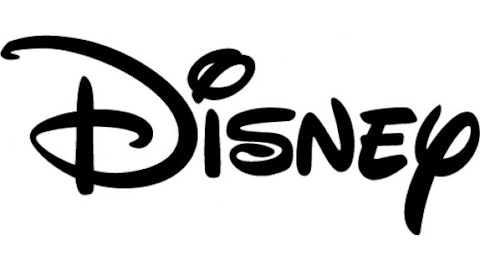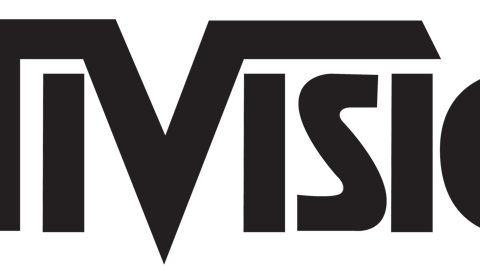To most investors, Microsoft Corporation (NASDAQ:MSFT) is the textbook example of a slow-growth tech stock, a cooling red giant that was once the brightest star in the tech universe. Although the stock climbed an admirable 23% over the past twelve months, Wall Street’s general perception of Microsoft Corporation (NASDAQ:MSFT) is that its best days are behind it, despite CEO Steve Ballmer’s eager attempts to prove that the company still has a few tricks up its sleeve.

Therefore, let’s analyze Microsoft Corporation (NASDAQ:MSFT)’s recent moves, and see if the company can still prove to Wall Street that it still has the clout to take on market leaders Google Inc (NASDAQ:GOOG) and Apple Inc. (NASDAQ:AAPL).
Creating a unified operating system
To modernize and streamline Microsoft Corporation (NASDAQ:MSFT)’s operations, Steve Ballmer recently announced Microsoft’s biggest reorganization in five years. The most important change was the elimination of its five business units – Windows, Server and Tools, Microsoft Business Division, Online Services, and Entertainment & Devices, which previously operated separately under their own presidents and CFOs.
All three of the company’s operating systems – Windows 8, Windows 8 RT and Windows Phone 8 – will be unified under a single division, the Operating Systems Group, to share more technologies and make cross-platform applications much easier to develop. It’s a move that could make app development more appealing than it is today, and more similar to Android’s cross-platform availability of apps on smartphones, tablets and hybrids.
In other words, developers would not have to rewrite a program for three separate Microsoft architectures. They would only have to write a single one that could work across all three platforms, so a program written for Windows Phone 8 could also be used on a Windows 8 laptop. This single Windows shared architecture could finally evolve from a scattered, hardware-defined operating system into a unified “write once, run anywhere” system to rival Android. Ballmer notably assigned Terry Myerson, the head of Windows Phone engineering, to head the Operating Systems Group, which suggests that Windows operating systems will now be built with the smartphone as the top priority.
If this initiative is successful, it would also improve Microsoft’s current 6% share of the mobile market, which has been primarily attributed to the growth of Nokia Corporation (ADR) (NYSE:NOK)’s Windows Phone devices.
Streamlining its segments
Meanwhile, Bing, MSN, Office, Dynamics CRM and ERP, Skype and other applications are now grouped under the newly created Applications and Services division. Server technologies are now clumped together under its Cloud and Enterprise Group, while the Xbox, Surface, PC peripherals, games and entertainment are now part of the new Devices and Studios Group.
These four newly formed divisions, now called “engineering centers,” will all report directly to Ballmer, who will still stay on as CEO, much to the chagrin of some shareholders. However, this realignment of its core teams should, in theory, lead to faster product releases.
The need for speed
Under Ballmer’s leadership, Microsoft became a reactive company rather than a proactive one. The company has a history of reacting far too slowly to hot tech trends, such as portable music players, smartphones and tablets. When Microsoft’s products finally arrive, they are often underwhelming and unpopular, like the Zune, the Kin and the Surface.
However, Ballmer recognized this problem, and decided to pay Nokia Corporation (ADR) (NYSE:NOK) $1 billion annually to pump out Windows Phones. Nokia’s CEO Stephen Elop, a former Microsoft executive, knew that creating a Windows Phone would be preferable to dying a slow death with the aging Symbian OS that the company’s Finnish board was so enamored with. In retrospect, Nokia’s decision to offer a Windows Phone was actually a smarter move than going the easy route and creating an Android device, since it made Nokia’s products stand out against a sea of similar Android handsets from Samsung, HTC, and Sony Corporation (ADR) (NYSE:SNE). This individuality helped Microsoft claim 3.2% of the smartphone market last quarter. Nokia currently produces over 80% of all Windows Phone devices.
Microsoft’s renewed focus on mobile devices as the heart of Windows, as opposed to the treatment of mobile devices as peripherals, sends a clear message to Google Inc (NASDAQ:GOOG) that it is striving to create a unified OS that can hold its own against Android. Although these are baby steps for Microsoft, which still faces Google Android’s overwhelming 75% mobile market share, they are at least steps in the right direction.
Eyes on the prize
Although Microsoft’s recent reorganization shows promise, the company still has a knack of making broad, unfocused statements that cast doubt on its long-term focus.
For example, Microsoft Xbox MVP Marques Lyons recently stated, “The Xbox One, priced at $499, is an affordable option for small business owners, as there are many features built into the console that could help it rival even the most modest of video conferencing and networking platforms.”
I disagree with Lyons’ claim. For less than $200, anyone can purchase a Google Chromebook that achieves the same purpose in a smaller, mobile package. The Xbox One is not a mobile device, and will never be, despite Lyon’s goofy claim that the Xbox One is a “justifiable” business expense.
Meanwhile, Microsoft also revealed that it was close to releasing a smartwatch, with Microsoft sources claiming that a Surface-branded smartwatch could be released later this year. Although a new smartwatch can be considered a preemptive strike against Google, which reportedly has an Android-powered smartwatch in the works, I think it won’t make much of an impact on overall revenue growth. Market research firm ABI only forecasts 1.2 million smartwatches will be sold worldwide by the end of 2013, pegging the total value of the market at a mere $370 million.
Lastly, Microsoft’s upcoming release of Windows 8.1 still doesn’t address its core problem – the fact that it is a clunky, hybrid operating system stuck between two worlds. Although Microsoft has now established the framework for more efficient business decisions, it now has to implement them and avoid decisions that make the company look as if it’s grasping at straws.
The Foolish Bottom Line
Ever since the 1990s, it’s been popular to bash Microsoft due to its dominance of personal computing. Ever since Steve Ballmer took over in 2000, it became vogue to bash the hot-headed CEO who had a penchant for throwing chairs.
Although I still stand by my previous claim that Microsoft is primarily responsible for the precipitous decline of the PC industry over the past three years, I believe that Microsoft still has a chance to turn it around. Apple Inc. (NASDAQ:AAPL)’s recent weakness, Nokia’s growth, and Microsoft’s new commitment to creating a unified operating system could create a valuable opportunity for Microsoft to retake a part of the market that it helped create.
Leo Sun owns shares of Nokia. The Motley Fool recommends Google. The Motley Fool owns shares of Google and Microsoft.
The article Can a Leaner and Meaner Microsoft Learn From Its Past Mistakes? originally appeared on Fool.com and is written by Leo Sun.
Leo is a member of The Motley Fool Blog Network — entries represent the personal opinion of the blogger and are not formally edited.
Copyright © 1995 – 2013 The Motley Fool, LLC. All rights reserved. The Motley Fool has a disclosure policy.
| https://www.insidermonkey.com/insider-trading/company/nokia+corp/924613/ |





